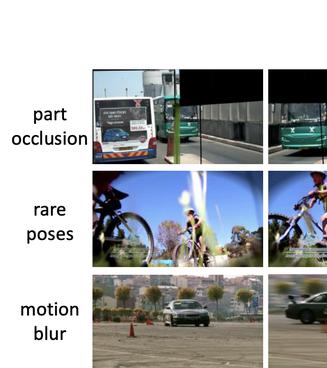WSOD2: Learning Bottom-up and Top-down Objectness Distillation forWeakly-supervised Object Detection
We study on weakly-supervised object detection (WSOD)which plays a vital role in relieving human involvement fromobject-level annotations. Predominant works integrate re-gion proposal mechanisms with convolutional neural net-works (CNN). Although CNN is proficient in extracting dis-criminative local features, grand challenges still exist tomeasure the likelihood of a bounding box containing a com-plete object (i.e., “objectness”). In this paper, we pro-pose a novelWSODframework withObjectnessDistillation(i.e.,WSOD2) by designing a tailored training mechanismfor weakly-supervised object detection. Multiple regressiontargets are specifically determined by jointly consideringbottom-up (BU) and top-down (TD) objectness from low-level measurement and CNN confidences with an adaptivelinear combination. As bounding box regression can fa-cilitate a region proposal learning to approach its regres-sion target with high objectness during training, deep ob-jectness representation learned from bottom-up evidencescan be gradually distilled into CNN by optimization. Weexplore different adaptive training curves for BU/TD ob-jectness, and show that the proposed WSOD2can achievestate-of-the-art results.
PDF Abstract





 MS COCO
MS COCO
 PASCAL VOC 2007
PASCAL VOC 2007
